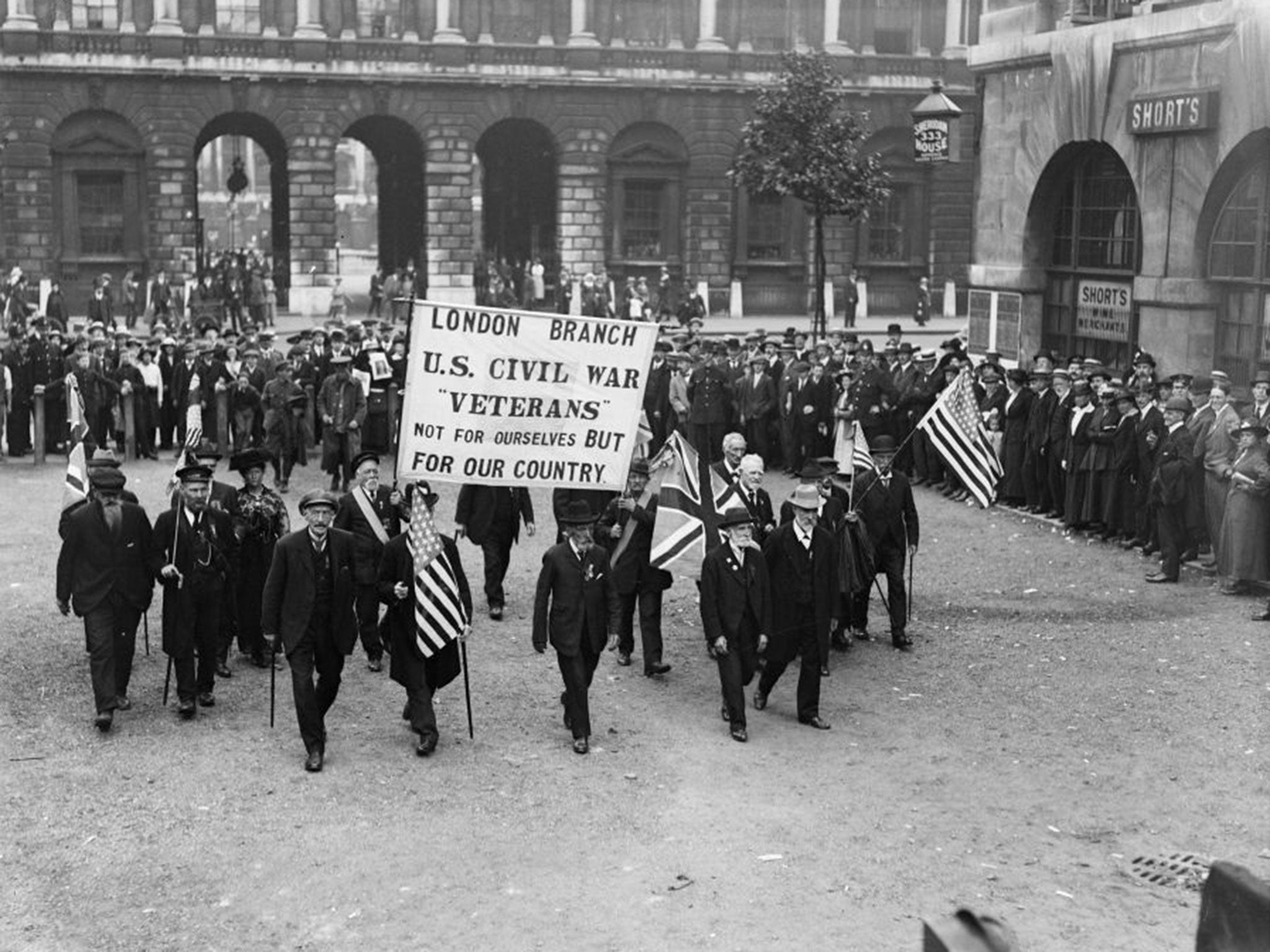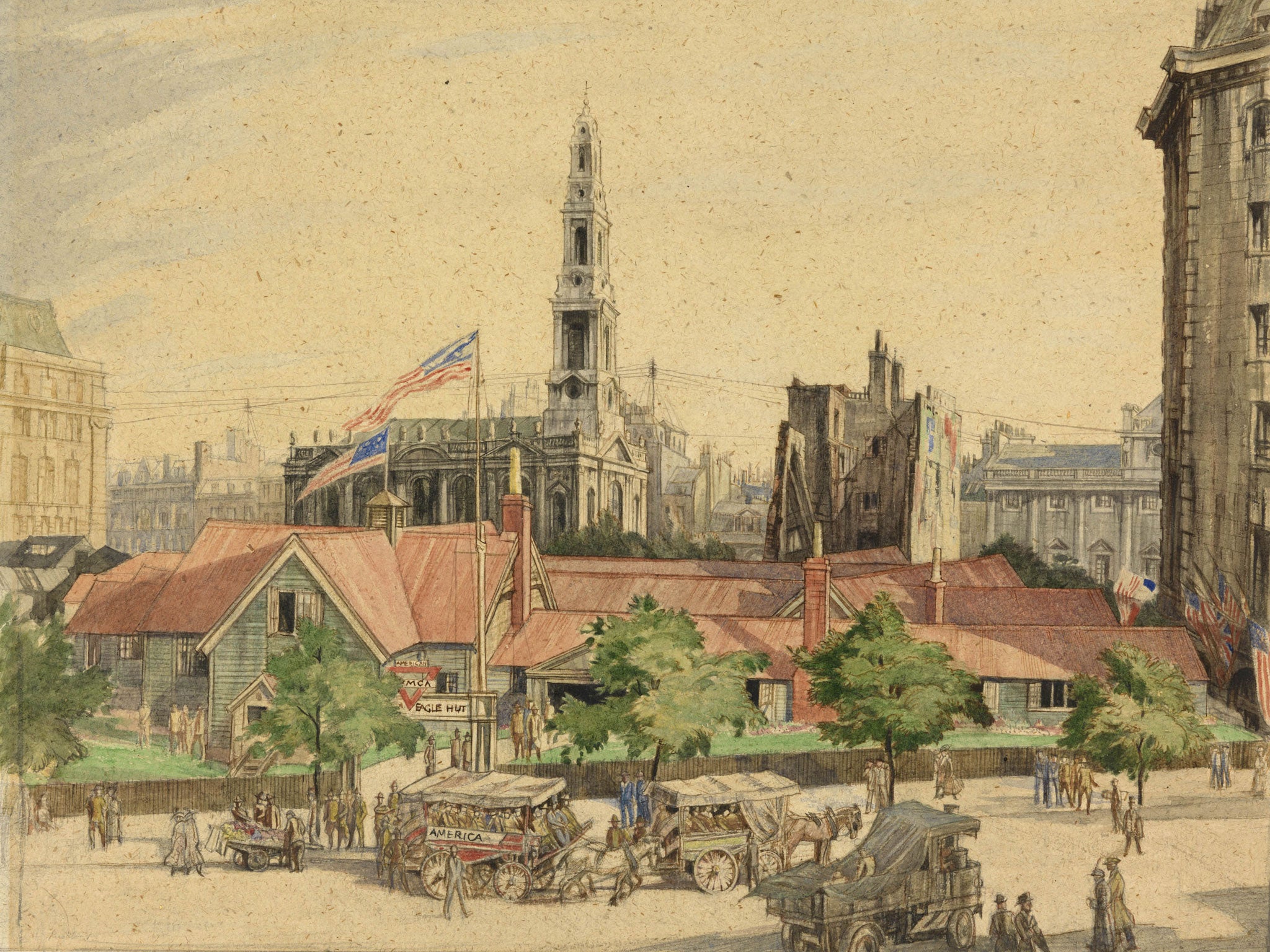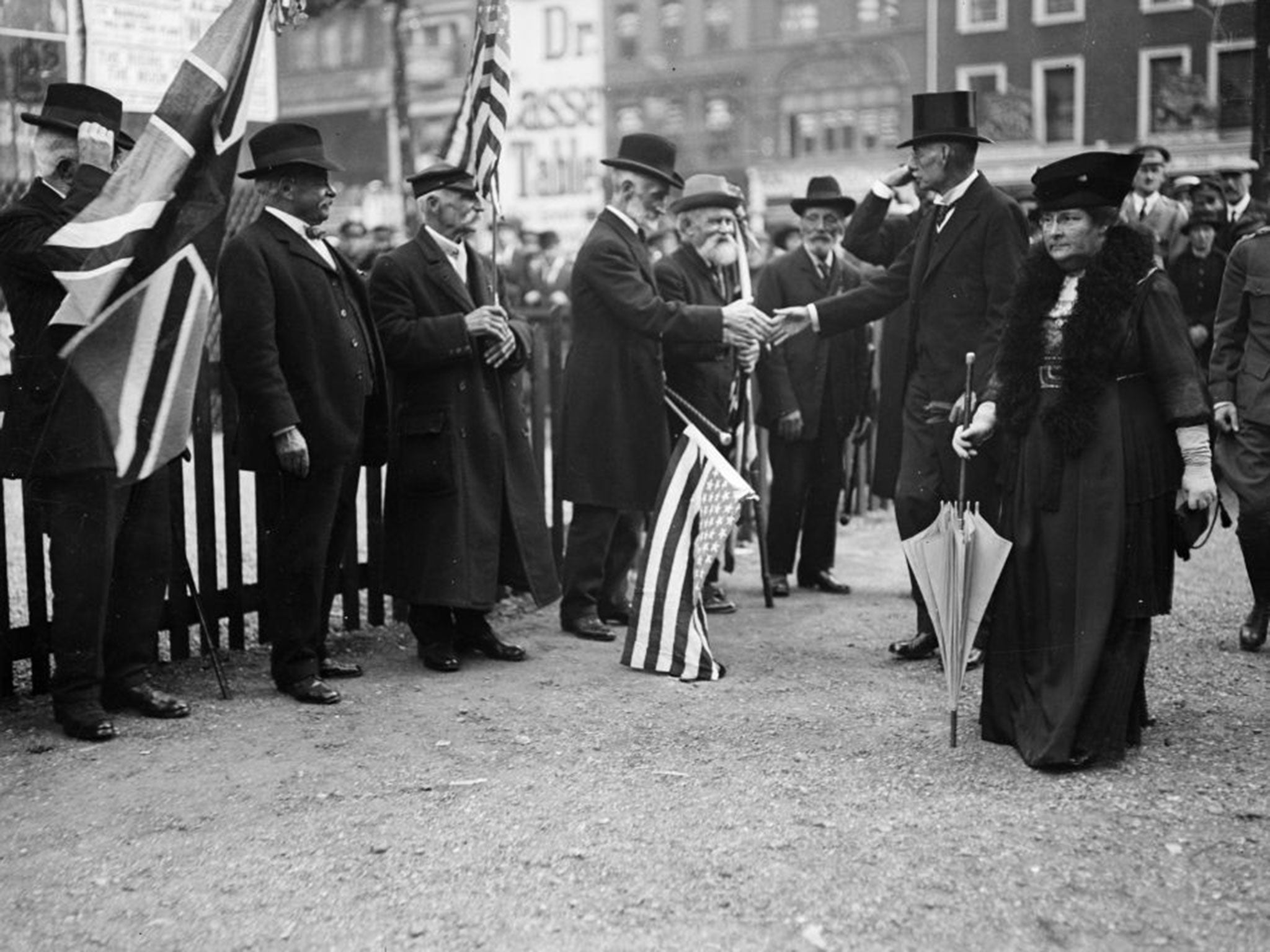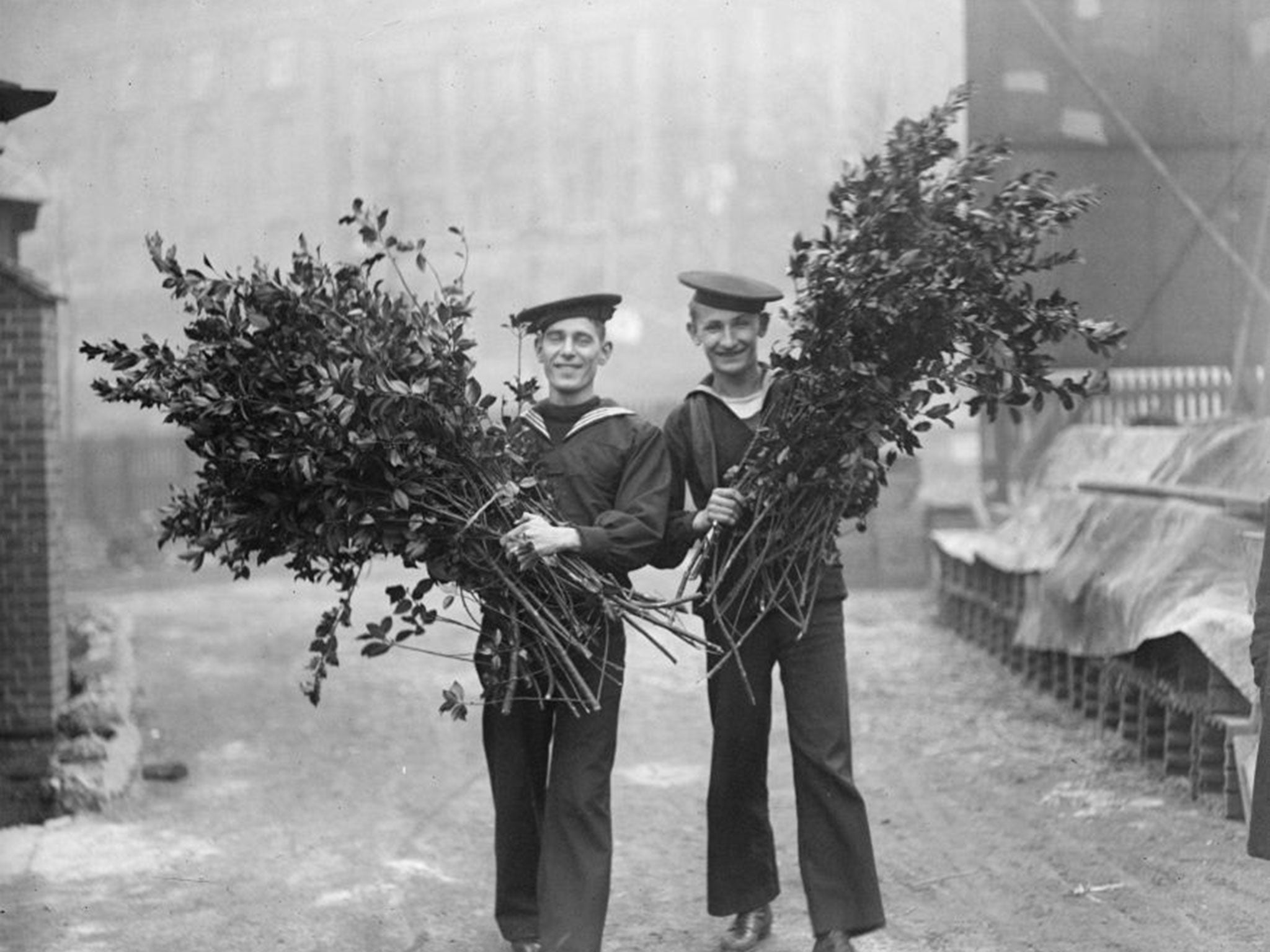A History of the First World War in 100 Moments: A home from home in London for American ‘Doughboys’ - the Aldwych Eagle Hut
With US troops arriving in London en route to the Western Front, it made sense to give them a place to meet – the Eagle Hut

Your support helps us to tell the story
From reproductive rights to climate change to Big Tech, The Independent is on the ground when the story is developing. Whether it's investigating the financials of Elon Musk's pro-Trump PAC or producing our latest documentary, 'The A Word', which shines a light on the American women fighting for reproductive rights, we know how important it is to parse out the facts from the messaging.
At such a critical moment in US history, we need reporters on the ground. Your donation allows us to keep sending journalists to speak to both sides of the story.
The Independent is trusted by Americans across the entire political spectrum. And unlike many other quality news outlets, we choose not to lock Americans out of our reporting and analysis with paywalls. We believe quality journalism should be available to everyone, paid for by those who can afford it.
Your support makes all the difference.On a “perfect September afternoon” in 1917, the best-selling current affairs magazine, The Graphic, dispatched one of its leading writers, Margaret Chute, to report on an exotic occurrence in the heart of London.
Chute, 31, made her way to the south-eastern edge of Covent Garden, where a crowd of servicemen and dignitaries had gathered in the Aldwych. They were there for the opening of the Eagle Hut, which had been set up by the American YMCA as a home-from-home for US soldiers and sailors.
The “hut” was a series of conjoined wooden buildings, at the southern end of Kingsway, where Bush House stands today. It had been operating since mid-August, to cope with the growing number of “Doughboys”, or American troops, who had been passing through the capital since the US had entered the war on the Allied side in April that year. But this was its official launch.
As Chute reported, the ambitious set-up included a restaurant and kitchens geared up to serve thousands of meals a day, beds for 400-odd to stay overnight, a theatre hall big enough for 1,000, a billiard room and a reading room, all staffed by some 800 volunteers, most of them women.
“We’re here to bring them [the troops] in touch with things that will uplift. We’re here to do what needs to be done: to give our boys a hint of home,” said Robert Stuart, the YMCA’s general secretary, before the official opening.
There was, by all accounts, a festive atmosphere for the opening, presided over by the US ambassador, Walter H Page. Footage from the day shows silver-haired Civil War veterans marching stiffly to support their brothers in arms; laughing volunteers jostling for position in front of a huge American flag; and serving army and navy men waving flags – Stars and Stripes and Union Jacks together – in celebration.

Chute reported “batteries of cameras, cinema machines whirring madly, souvenir-hawkers shouting their wares”, in the melee. For Chute and other native observers, the fanfare around this “huge, portable hotel” was in marked contrast to the many comparable huts that had been established since 1914 by the English YMCA to provide morale-boosting services to British forces (a dramatic new departure for an organisation hitherto known for its work within the Church and for the homeless).
Within 10 days of war being declared there had been 250 huts across the country; by 1916, 1,500. The modest huts, financed by fundraising drives, were often positioned near railway stations and would dole out tea and sandwiches.
The Eagle Hut was on a different scale altogether, thanks to the US YMCA’s healthy bank balance. Sir Arthur Yapp, the English YMCA’s national secretary during the war – and credited with instigating the organisation’s role as an uplifting presence at home and on the front – laid out the difference in financial fortunes in his memoir, Romance of the Red Triangle: “Their first appeal brought in £5m, the second more than £12m, and their appeal a year later, in October 1918 is for £20m.”

This compared with £2.5m raised in the UK over four years at war. With funds to spend, the Americans were able to make good on Stuart’s promise. The huge restaurant served ice cream and American-style pancakes (sampled on one occasion by King George V during a visit to mark Independence Day in 1918). There was free-flowing pop from a soda-fountain – an exotic curiosity for Margaret Chute: “Chief of the joy spots of this joyous abode. Here masses of fresh fruit may be seen and the ceaseless fizz of the soda tap testifies the popularity of the Eagle ‘bar,’” she wrote.
Every effort was made to make sure soldiers did not feel homesick; a huge map worked as a rudimentary social network. Men would stick a flag in their home town to identify any other visitors from their area, with an attendant on a megaphone announcing any link-ups.
Sherwood Eddy, a YMCA secretary in the US, reported visiting the hut in 1917: “It would be difficult to devise a more homelike or attractive place for soldiers… the big fireplaces and comfortable chairs suggested the equipment of an up-to-date club.”
The hotel-like atmosphere extended beyond the hut; female drivers ferried soldiers from stations and there were organised sight-seeing tours and sporting events, including a baseball match at Stamford Bridge between the US Army and US Navy. The hut was open day and night.

In her report, Chute regaled The Graphic readers with a (uncorroborated) story that the key had been “thrown away, and the doors will not close again till peace comes”.
When peace was declared, in November 1918, it did not prompt the immediate closure of the Eagle Hut. Many Americans remained and continued to use the hut’s facilities. The Mary Evans Picture Library has a postcard featuring a view of the hut sent from an American soldier still in London in January 1919: “Leaving ‘Blighty’ on the 8.20 tonight but surely don’t like to go for this is SOME town and I have been having SOME time,” wrote the sender.
The hut finally closed in August 1919. But for many of those Americans it would live on in their memories.
Tomorrow: a naval mutiny is crushed
The '100 Moments' already published can be seen at: independent.co.uk/greatwar
Join our commenting forum
Join thought-provoking conversations, follow other Independent readers and see their replies
0Comments